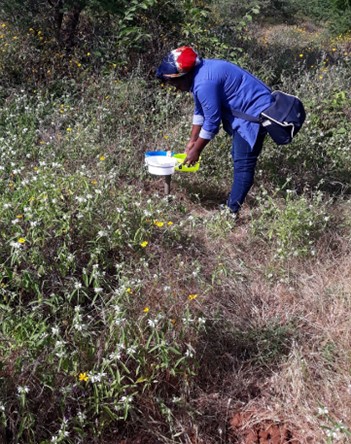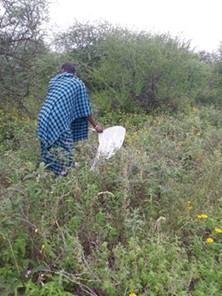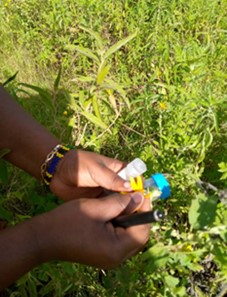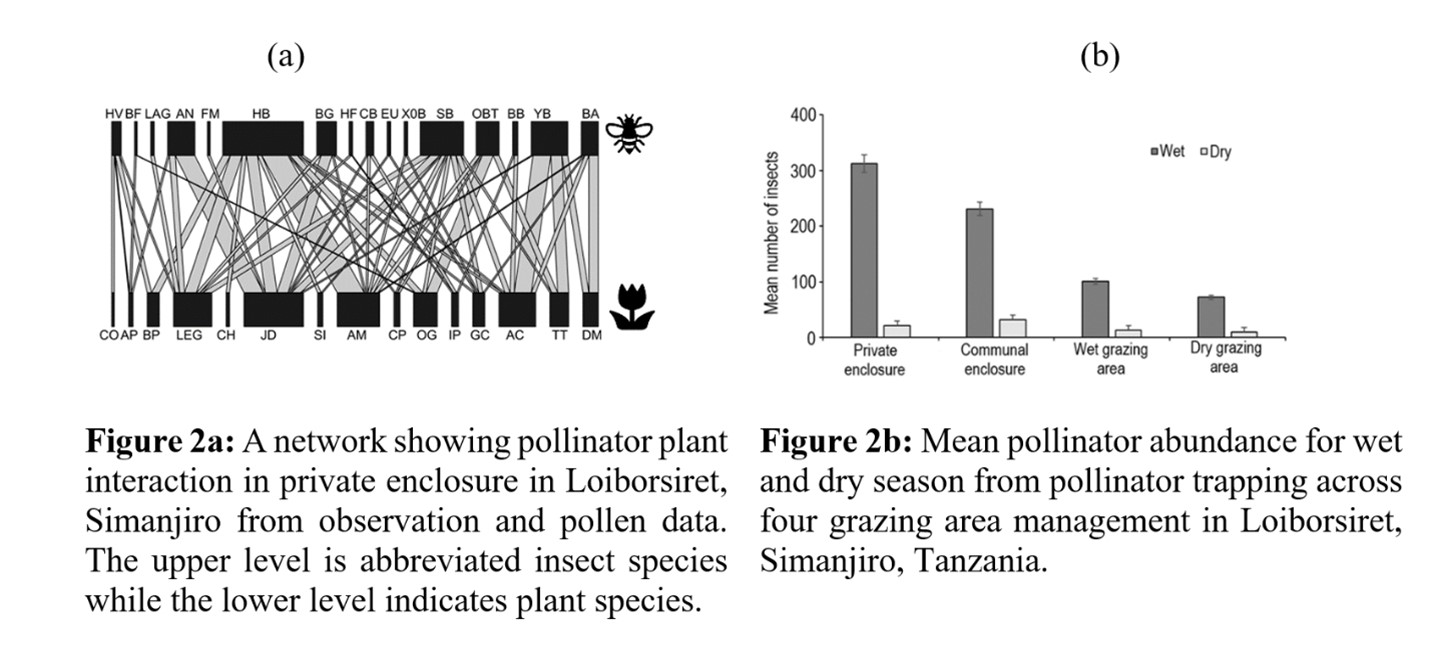The current status and role of insect pollinators for pastoralist livelihood diversification in Simanjiro District, Northern Tanzania.
The current status and role of insect pollinators for pastoralist livelihood diversification in Simanjiro District, Northern Tanzania.
Introduction
Rangelands are essential for maintaining biodiversity and the livelihoods of local communities in various parts of the world (Dettenmaier et al., 2017). Pollinators are one of the critical factors in rangeland functioning because they provide essential ecosystem services, including increasing plant species diversity and maintaining soil conditions for crop production and livelihoods, promoting the sustainability of rangeland ecosystems (Klein et al., 2007; Stein et al., 2017). However, decreases in flower-visiting insect pollinators are now reported in several regions of the world, including rangelands (Potts et al., 2009). This decline might be caused by increased grazing pressure that reduces the abundance and diversity of plant species attractive to pollinators. Simanjiro rangelands are threatened with population increase, habitat degradation and fragmentation which threatens biodiversity and livelihoods. As an adaptation, the local community adopted the use of traditional enclosures to rehabilitate degraded rangelands and maintain grazing lands for livestock.
Project Aims
This project aimed to assess the current status of pollinator species and their potential role in pastoralists' livelihood diversification in Simanjiro District, Nothern, Tanzania. We aimed to provide baseline information on pollinator species richness, abundance and diversity under different rangeland management. In addition, we wanted to see if the local Maasai understand pollinator species available in the area and the potential benefits for livelihoods. Our four specific objectives were; (1) To assess the knowledge of the local pastoralist community about insect pollinators and their role in local livelihood diversification, (2) To evaluate the influence of environmental characteristics and vegetation cover on pollinator species abundance, composition and distribution in Simanjiro rangelands (3) To evaluate the influence of different grazing management strategies on pollinator communities, abundance and diversity in Simanjiro district. (4) To determine pollinator foraging preferences and their interactions with different plant species in Simanjiro rangelands.
Data Collection
We used several techniques to collect data, including interviews for assessment of local knowledge of pollinators, field trapping of insects using pan traps (yellow, blue and white) and standardized sweep netting to study the effects of grazing management on pollinators. In addition, we sampled landscape characteristics, including vegetation cover, flower abundances, diversity and soil nutrients, during fieldwork. Finally, we did field observations and pollen sampling for pollinator-plants interactions and the construction of pollinator networks.




Figure 1: Data collection in Loiborsiret Simanjiro, Tanzania, from 2019 to 2021.
Summary of key findings
We found Apis mellifera as the most popular pollinator in the area, as all respondents could correctly identify them. However, we noted a limited knowledge of pollination as an ecosystem service as only a small proportion of respondents (4%) recognized the importance of pollinators for the ecosystem service of pollination. We also found that the local community has engaged in beekeeping for income diversification, with limited men participation as compared to women, with the former considering beekeeping as an activity for women only.
Findings also showed that traditional enclosure management is essential in promoting pollinator conservation due to improved species abundance and diversity in enclosure sites compared to open rangelands used for dry and wet season grazing (Figure 2b). In addition, we noted that landscape factors influenced pollinator populations, whereby a significantly positive correlation was recorded between the mean number of insects and the mean number of inflorescences (r = 0.68, P < 0.0001). Likewise, a positive correlation was also noted between herbaceous cover and insects (r = 0.366, P = 0.0016).

Simanjiro rangelands were also noted to be rich in pollinator plants, including Aspilia mossambiensis, Justicia debile, Acacia mellifera, and Acacia tortilis, which had a higher degree of visitation. However no significant correlation was noted between pollinator visitation and protein concentration in pollens (r = -0.471, P = 0.239) nor with fatty acids concentration (r = 0.253, P = 0.546). Analysis of recorded visitations and pollen data also showed that private enclosures contained significantly larger networks with more interactions than other sites (Figure 2a).
Conclusion and future work
Simanjiro rangelands contain diverse insect pollinators including threatened genera such as Lasioglossum, whose conservation is at risk due to rangeland degradation and intensive grazing. In addition, the local community are less aware of pollinator groups apart from the honey bee, Apis mellifera, which further increases pollinator vulnerability. Future work may focus on enhancing local awareness of pollinators and promoting private enclosure adoption because they have proven to conserve insects and vegetation. However, more work is still needed to study bee forage plants over multiple landscapes using advanced techniques such as DNA barcoding.
Dissemination of project findings
Publications related to this work:
- Mpondo, F.T., Ndakidemi, P.A., Treydte, A.C (2021). "Balancing Bees and Livestock: Pastoralist Knowledge, Perceptions and Implications for Pollinator Conservation in Rangelands, Northern Tanzania". Tropical Conservation Science Volume 14: 1–12. https://journals.sagepub.com/doi/full/10.1177/19400829211028127
- Mpondo, F. T., Ndakidemi, P.A., Pauly, A., Treydte, A.C (2021). "Traditional rangeland management can conserve insect pollinators in a semi-arid rangeland, northern Tanzania". Acta Oecologica. https://doi.org/10.1016/j.actao.2021.103790
Conference Presentations
This work has been presented at the following conferences;
- Oral Presentations at the 13th TAWIRI Scientific Conference held from 6-8 December 2021, at Arusha International Conference Centre-Tanzania.
- Poster presentation at Arusha Conservation Agriculture Forum (ACAF) on 14th January 2021.
- Poster presentation at Agroecology Conference Arusha, Tanzania on 13th October 2020.
Acknowledgement
I appreciate the Eva Crane Trust for providing funding for this project that was part of PhD studies for Faith Thomas Mpondo. I am also grateful to CREATES, the main sponsor. Furthermore, I thank COSTECH and TAWIRI for granting a research clearance. Thanks also to the district, ward, village officials and research assistants for their support, without forgetting the welcoming Loiborsiret villagers for their cooperation throughout the project.
Dr Faith Thomas Mpondo,
PhD in Life Sciences
NM-AIST
References
Dettenmaier, S. J., Messmer, T. A., Hovick, T. J., & Dahlgren, D. K. (2017). Effects of livestock grazing on rangeland biodiversity: A meta-analysis of grouse populations. Ecology and Evolution, 7(19), 7620–7627. https://doi.org/10.1002/ece3.3287
Klein, A. M., Vaissière, B. E., Cane, J. H., Steffan-Dewenter, I., Cunningham, S. A., Kremen, C., & Tscharntke, T. (2007). Importance of pollinators in changing landscapes for world crops. Proceedings of the Royal Society B: Biological Sciences, 274(1608), 303–313. https://doi.org/10.1098/rspb.2006.3721
Stein, K., Coulibaly, D., Stenchly, K., Goetze, D., Porembski, S., Lindner, A., Konaté, S., & Linsenmair, E. K. (2017). Bee pollination increases the yield quantity and quality of cash crops in Burkina Faso, West Africa. Scientific Reports, 7(1), 1-10.
Potts, S. G., Woodcock, B. A., Roberts, S. P. M., Tscheulin, T., Pilgrim, E. S., Brown, V. K., & Tallowin, J. R. (2009). Enhancing pollinator biodiversity in intensive grasslands. Journal of Applied Ecology, 46(2), 369–379. https://doi.org/10.1111/j.1365-2664.2009.01609.x
